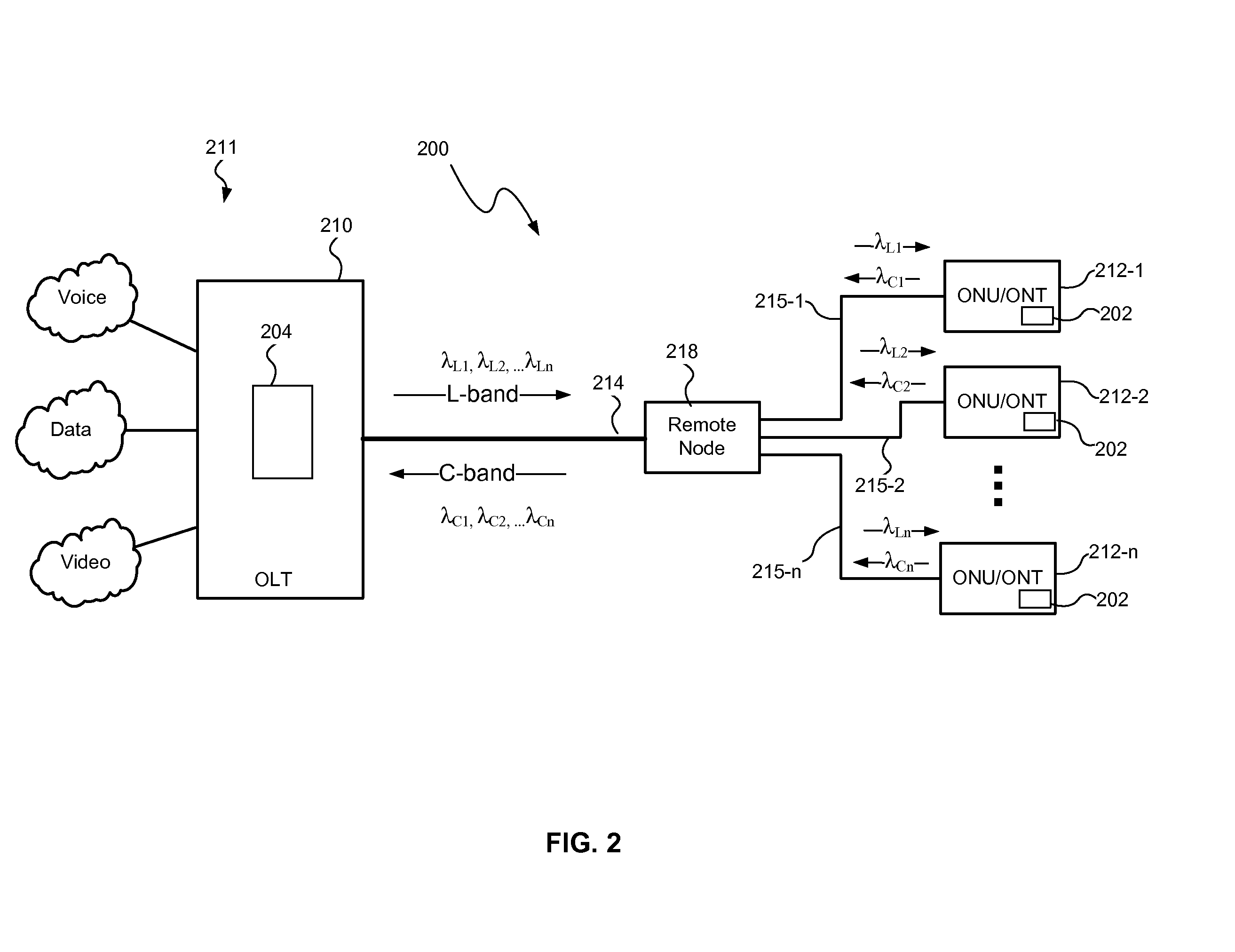Laser array mux assembly with external reflector for providing a selected wavelength or multiplexed wavelengths
a technology of laser array and reflector, which is applied in the field of wavelength division multiplexed optical systems, networks, etc., can solve the problems of inefficient tdm approach, complex and expensive cost of deploying and managing many fibers, and increasing the number of fibers
- Summary
- Abstract
- Description
- Claims
- Application Information
AI Technical Summary
Benefits of technology
Problems solved by technology
Method used
Image
Examples
Embodiment Construction
[0020]A laser array mux assembly, consistent with embodiments described herein, generally includes an array of laser emitters coupled to an optical multiplexer, such as an arrayed waveguide grating (AWG), with an external partial reflector after the optical multiplexer. Each of the laser emitters may include a gain region that emits light across a plurality of wavelengths including, for example, channel wavelengths in an optical communication system. The AWG or optical multiplexer filters the emitted light from each of the laser emitters at different channel wavelengths associated with each of the laser emitters. The external partial reflector reflects at least a portion of the filtered light such that lasing occurs at the channel wavelength(s) of the reflected, filtered light. The laser array mux assembly may be used, for example, in a tunable transmitter, to generate an optical signal at a selected channel wavelength. The laser array mux assembly may also be used in a multiplexing...
PUM
 Login to View More
Login to View More Abstract
Description
Claims
Application Information
 Login to View More
Login to View More - R&D
- Intellectual Property
- Life Sciences
- Materials
- Tech Scout
- Unparalleled Data Quality
- Higher Quality Content
- 60% Fewer Hallucinations
Browse by: Latest US Patents, China's latest patents, Technical Efficacy Thesaurus, Application Domain, Technology Topic, Popular Technical Reports.
© 2025 PatSnap. All rights reserved.Legal|Privacy policy|Modern Slavery Act Transparency Statement|Sitemap|About US| Contact US: help@patsnap.com



